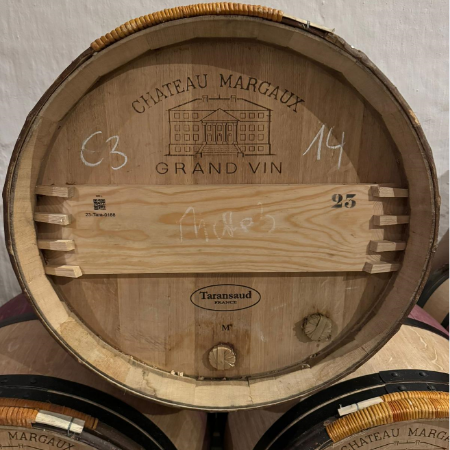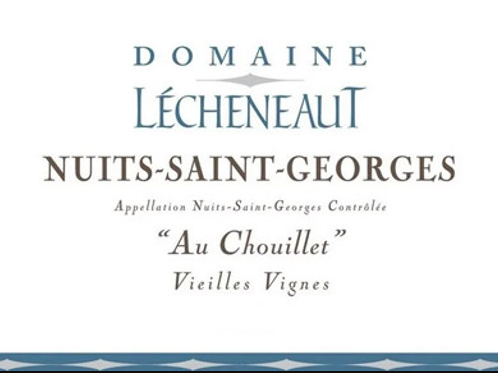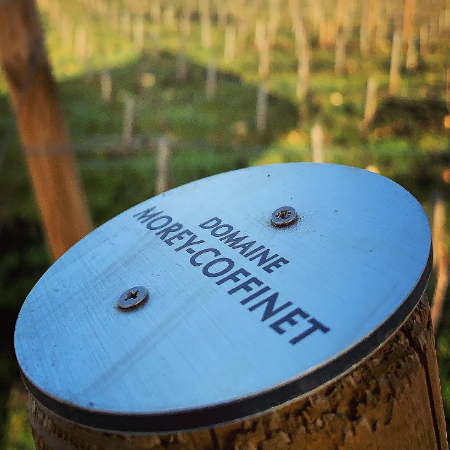This time last year I wrote “No doubt we all remember the start of lockdown in March 2020. No doubt we also remember the incredible weather we experienced then and for the months that followed.“ After the near perfect growing season of 2020, the 2021 vintage is a stark contrast. Many of you may similarly remember the news coverage in early April 2021 of devastating frosts across Europe that destroyed far more crops than just vines and a summer that was cold, wet and grey.
We have become accustomed to writing about frost damage, invariably due to an early start to the growing season because of a (too) warm spring. An early budburst means nascent buds are exposed to the worst effects of any frost. But this is detrimental mainly to quantity. Frequently, you will thus also hear that quality may well be improved, since the energy of the vine through the rest of the season is directed to fewer bunches. This does, however, presuppose reasonably favourable weather through the remainder of the season. Such weather was not forthcoming in 2021. The vignerons’ troubles certainly did not disappear with the disappearance of the frost.
In 2021, February and March were unusually warm, with temperatures up at 25 degrees Celsius in mid-March, provoking accelerated shoot and bud development. This advanced development, as would be expected, was more marked in Chardonnay than in Pinot Noir, as well as more in Grand and Premier Cru than in Village and regional level vineyards. In early April, a body of freezing air descended from the Arctic. Because this was a mass of cold air, known as a black or winter frost rather than the more common white frost of spring that rises from the plain, the usual frost protection methods of promoting air circulation to mix warmer air with the colder were rendered futile. Neither turbines nor helicopters could help; there was no warmer air. As in 2016, the sunny days that followed resulted in further damage due to a magnifying-glass effect of sun through ice burning the buds after snow had fallen during the few days of frost. “For three to four weeks the vines were then immobile, there was no growth. They only started again in May, at which point it was cold and rainy” related Jean-Pierre Latour. These milder and damper conditions encourage the development of mildew and oidium, which remained an ongoing problem, particularly for Chardonnay, as June and July continued cooler and wetter than the norm. August was barely much warmer, sunnier or drier; it still had more rainy and overcast days than the usual and far fewer sunshine hours. Temperatures in July and August were 10% below the averages for those months. September was similar. Across July, August and September there was around half the amount of sunshine as over the same three months in 2020. Finally, further rain as harvest began led to the very real threat of rot.
In the words of Jasper Morris, it was “the year of the century – if you are a student of vine diseases.” The year as a whole had a devastating effect on morale, something that was still evident when I visited the region in November 2022, despite the more abundant and weather-blessed 2022 vintage having been recently harvested. The scars of 2021 are deep, and they are visibly evident in the demeanour of growers when reflecting on a vintage that demanded so much work in the vineyard throughout the year and the difficult but essential decisions to reject further fruit through necessary sorting at harvest. It was shocking to see the miniscule volumes so evident in quarter-filled barrel cellars.
What does all this mean for the wines of this viticulturally traumatising vintage?
WHITES
It is undeniably true that the white wines bore the yield loss to a disproportionate extent. Jean-Pierre Latour told me there would be no Bouchères, Perrières nor Poruzots in the 2021 vintage, there would be just 20-25% of his Genevrières while Charmes was less affected and offered a bountiful one third of its usual volume! On balance, his vines yielded just one or two bunches each. The upside of this was that, despite the cold and miserable growing season, what energy there was proved more than sufficient to ripen such a tiny crop. Ironically, if the vine’s load had been greater, perhaps the wines would indeed have been a dismal failure. Instead, the few bunches that were left after the string of afflictions through the season achieved admirable ripeness while the generally cool temperatures ensured acidity was maintained, with tartaric acidity high. The wines show a scintillating sense of energy underpinning ripe, juicy citrus fruits. There is great mineral persistence and clear terroir definition. There is just so little wine.
REDS
While the reds were, in general, less volume-compromised than the whites, they were not without numerous challenges.
Sébastien Cathiard, who has such a wealth of Premiers Crus in Vosne-Romanée as well as in Nuits-St Georges, suffered significant losses precisely because of this, the stature of these vineyards inevitably meaning that budburst was earlier. He lost 70% of his Reignots, Orveaux and Malconsorts, and 50% of his two Nuits Premier Cru, Thorey and Murgers. He additionally lost 50-60% in his newer vineyards in the Hautes-Côtes de Nuits. Meanwhile, Romain Taupenot told me that he had a larger harvest in 2021 than in 2020 because of the debudding he had practiced in 2020 to reduce yield. In general, Gevrey-Chambertin and Morey-St Denis, where Taupenot-Merme is based, were less affected by the frost – though there was some damaging hail in northern Gevrey in June.
In terms of viticulture, the lack of sunshine and the rain over such an extended period meant even more hours than normal needed to be spent amongst the vines to monitor and spray against mildew and oidium. It was certainly an interesting time for organic growers. Ripeness was hard won and indeed chaptalisation, the addition of sugar to raise the alcohol level slightly in order to achieve balance and appropriate palate weight, was employed by numerous leading growers in 2021 for the first time in many, many years. Romain Taupenot chaptalised 3 cuvées, for example, while one achieved 13.9 degrees naturally. Sébastien Cathiard brought his wines up by between 0.2 and 1 degree, something most definitely not required with his later-picking policy and the recent warmer vintages.
One of the more talked about practices of recent years has been whole bunch or use of stems in the vinification of red wines. The natural instinct might be to suggest that less is more in 2021. How ripe could the stems be after a season such as this? Unripe stems would bring green flavours to the wine and unripe tannins, all of which must surely be detrimental to the finished wine? Additionally, stems could carry traces of rot. The Lécheneauts are generally more moderate in their use of stems but used none at all in 2021. Arnaud Mortet was more cavalier and stuck with his 100% use, though he does also painstakingly remove the larger central stem that holds the bunch together.
The buzzword of recent years, “infusion”, took a year off. Extraction and maceration policies had to adjust to a very different fruit profile and structure. While some may have sought to extract more from skins that were certainly thinner than those of recent years, others, acutely aware of the season’s issues, were anxious about unripe tannins and rot taint – even where sorting tables were used assiduously to eliminate anything even vaguely undesirable (and reducing wine quantity yet further). Sébastien Cathiard was conscious of pips that were less ripe and thus took great care. Romain Taupenot chose longer macerations, aiming for extraction over time rather than through any excess of pigéage or pumping over. As a general rule, there was less new oak and it is likely that many will bottle slightly earlier than usual, aiming to retain freshness rather than seek a touch more weight.
All of this evident care and attention added up, for the producers with whom we are lucky enough to work, to wines of purity and graceful poise. A new word to me was “juteux” which was used by many vignerons to describe their reds in particular. The simple translation to “juicy” correctly captures the appealing nature of these wines. But more than this I found wines that had a surprising and welcome clarity of fruit, a clear sense of terroir as well as of their position in the hierarchy – Grand Cru, Premier Cru, Village wine – and a fluidity and weightlessness that was beguiling. They do not lack concentration, but they do not have the density of the 2018s, 2019s or 2020s. Those vintages will need a lot of time. The 2021s, in contrast, will be a pleasure to drink almost immediately, while their seamless balance suggests wines that will keep more than long enough for any of us.
As we wrote earlier this year in relation to Bordeaux, the suggestion of a ‘welcome’ return to ‘classicism’ is facile and incorrect. No grower craved a growing season such as 2021 offered up on almost any level. Instead of looking through rose-tinted glasses at the heady days of two acceptable vintages a decade, we should welcome the thought-through philosophies and work ethics of the current generations. The sharing of knowledge and insight combined with the incredible hard work and conscientiousness of an increasing number of top producers has virtually eradicated the chances of a poor or unacceptable vintage. Yes, there may be minute quantities available in 2021, but then volumes were low in all recent previous vintages due to this same quality-conscious approach. Yes, prices may have risen but growers are cognisant of their resultant responsibility to the consumer and take that responsibility seriously.
In brief, 2021 has yielded a set of beautiful wines that will give immense pleasure in the short and longer term, sadly there is just not a raft of them.
And a final thought for any sceptics, the two vintages that have been mentioned in comparison to 2021’s growing season are 2016, which suffered a similar morale-breaking winter frost followed by a distinctly average summer, and 2010, which had near identical rainfall and sunshine hours.
Association with either of these vintages surely does 2021 no harm.



